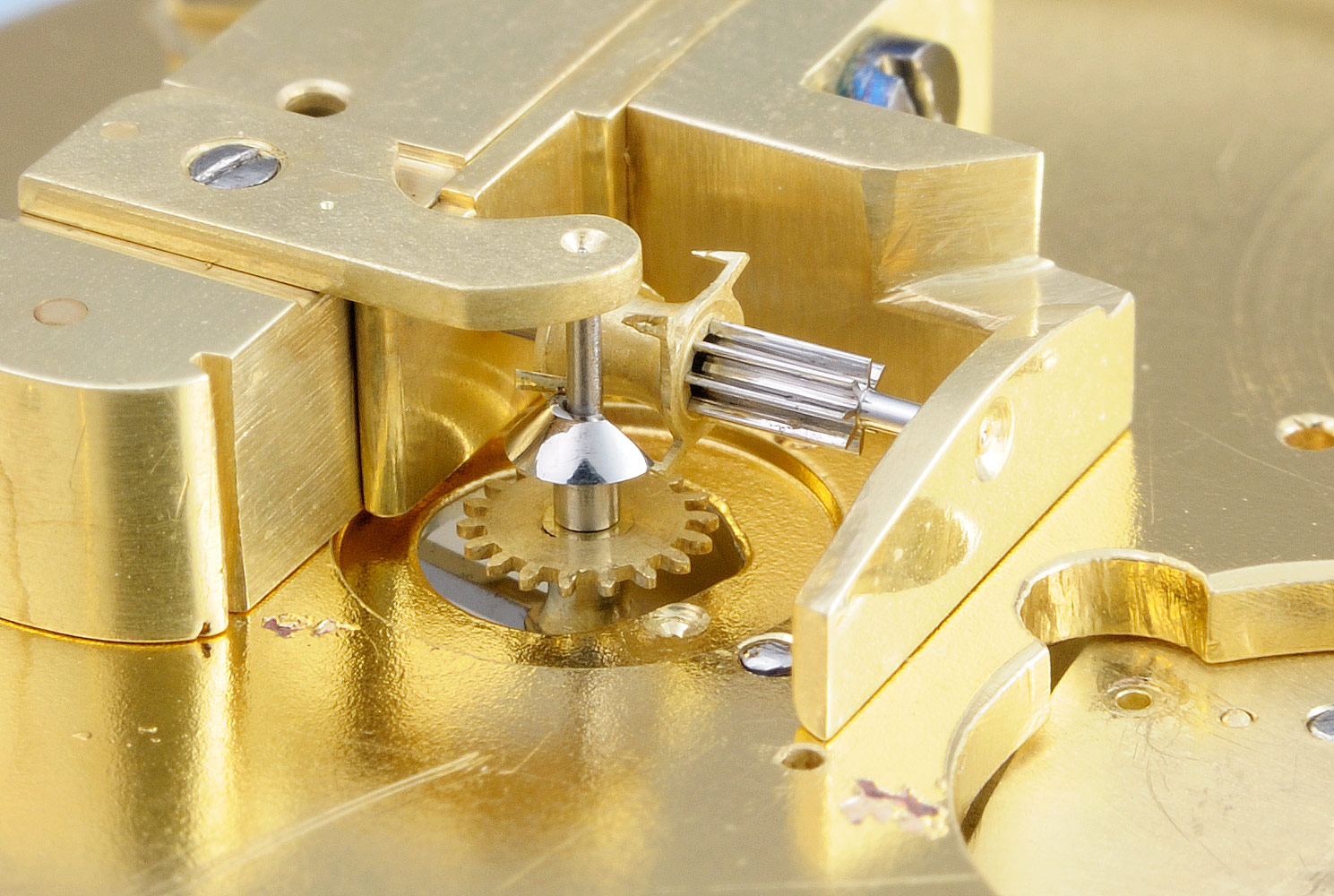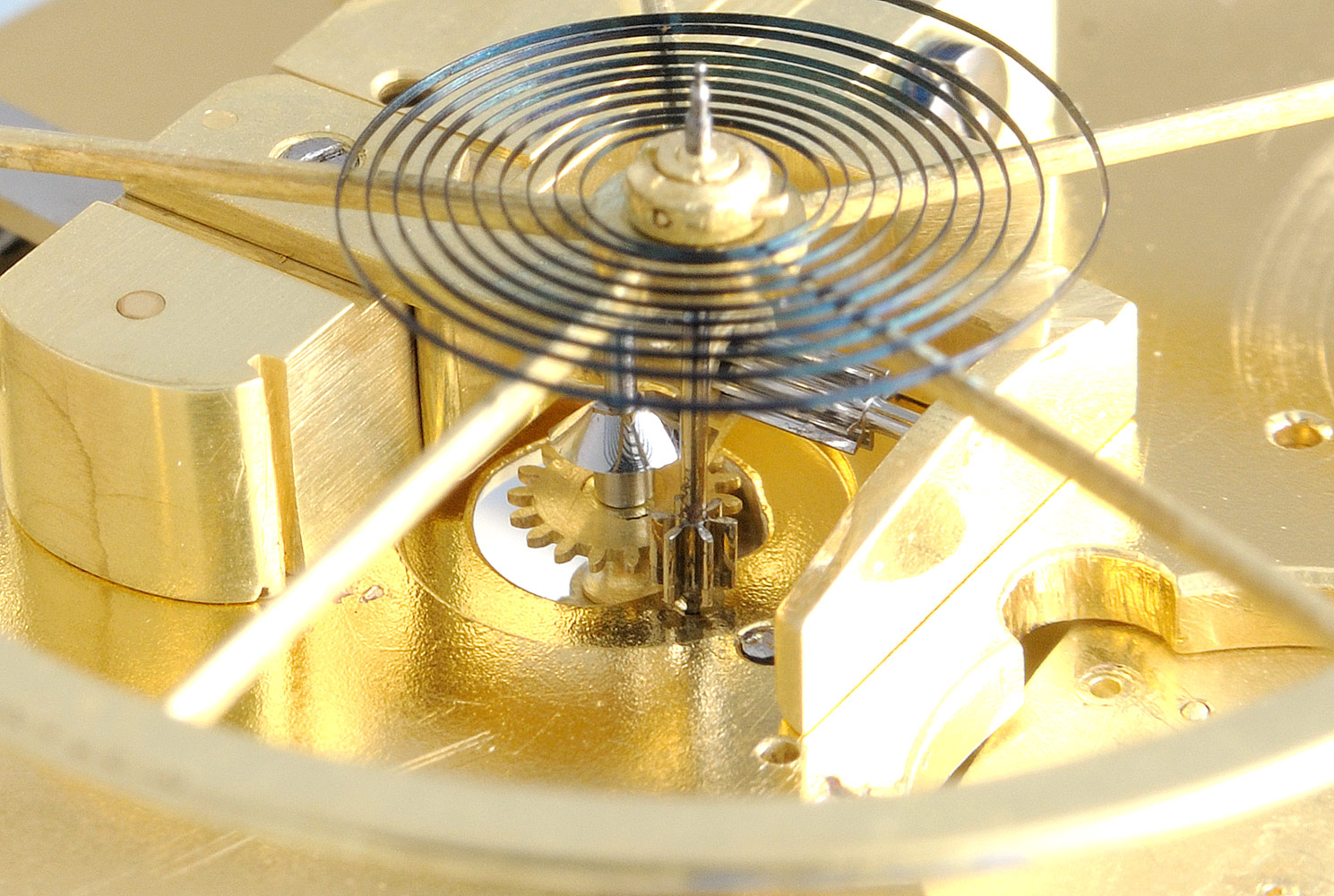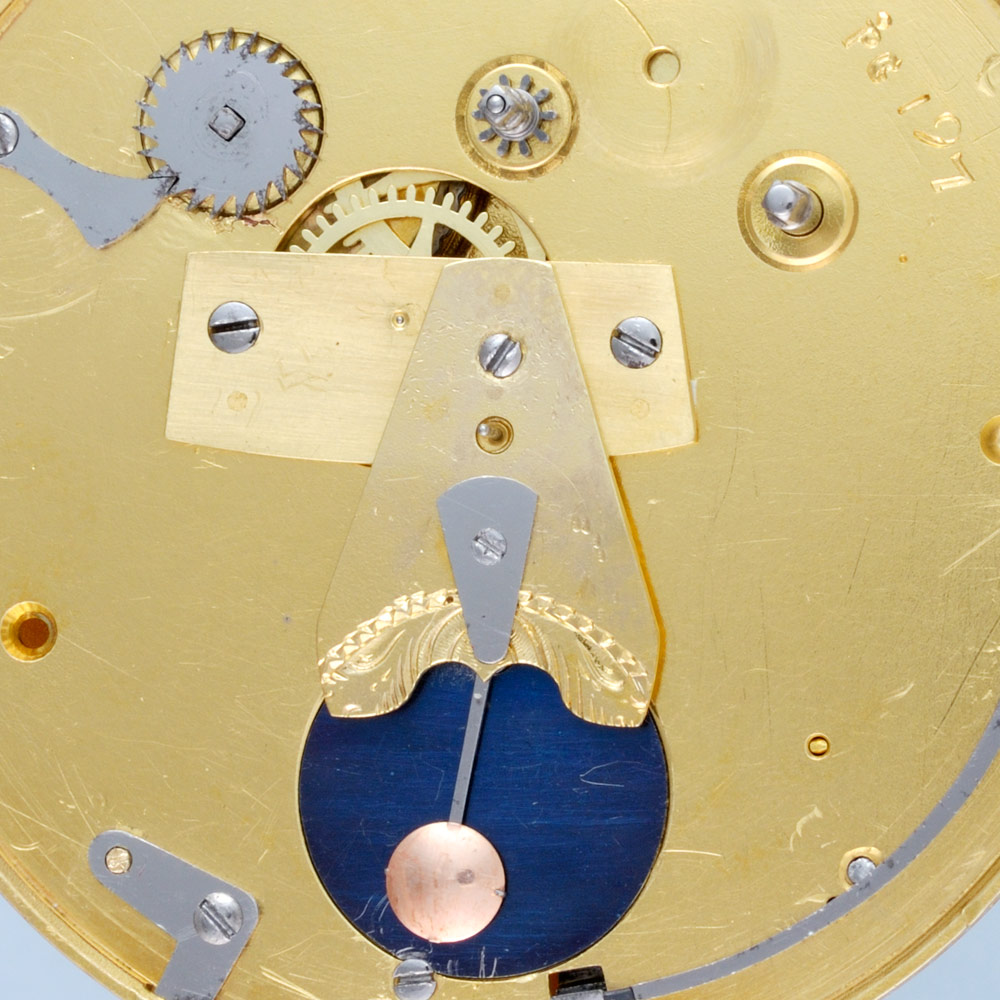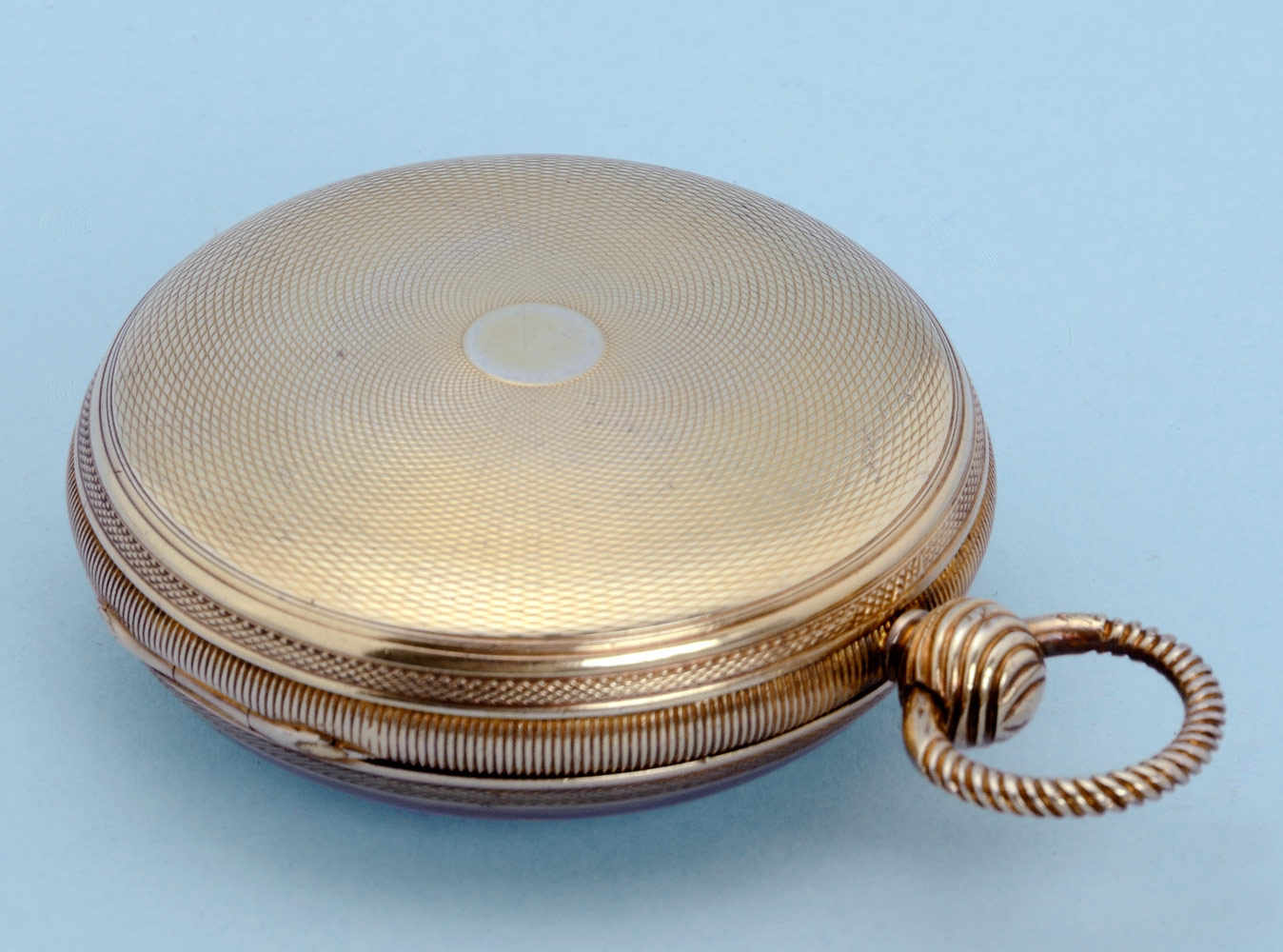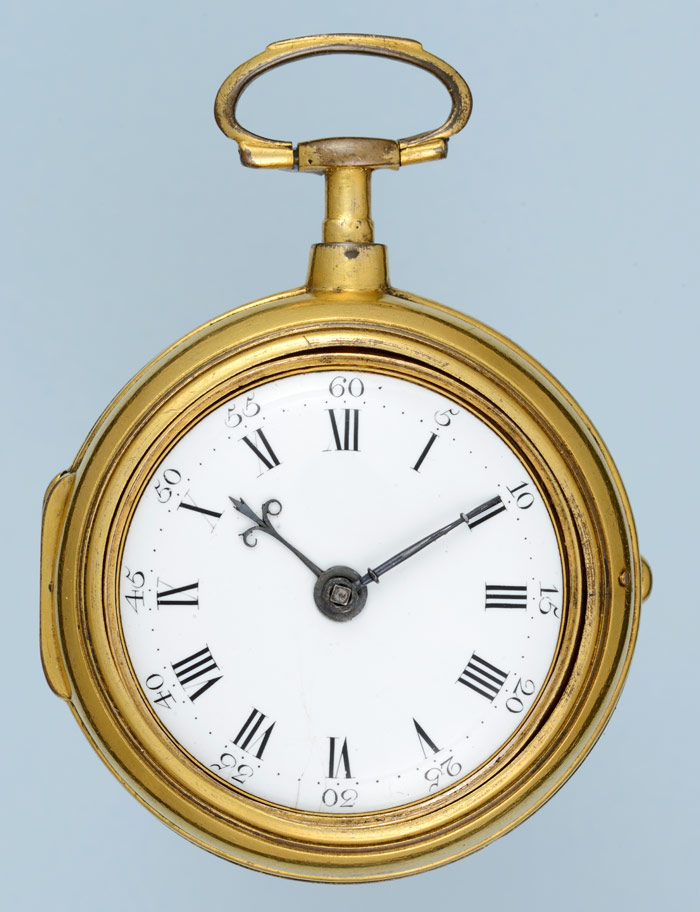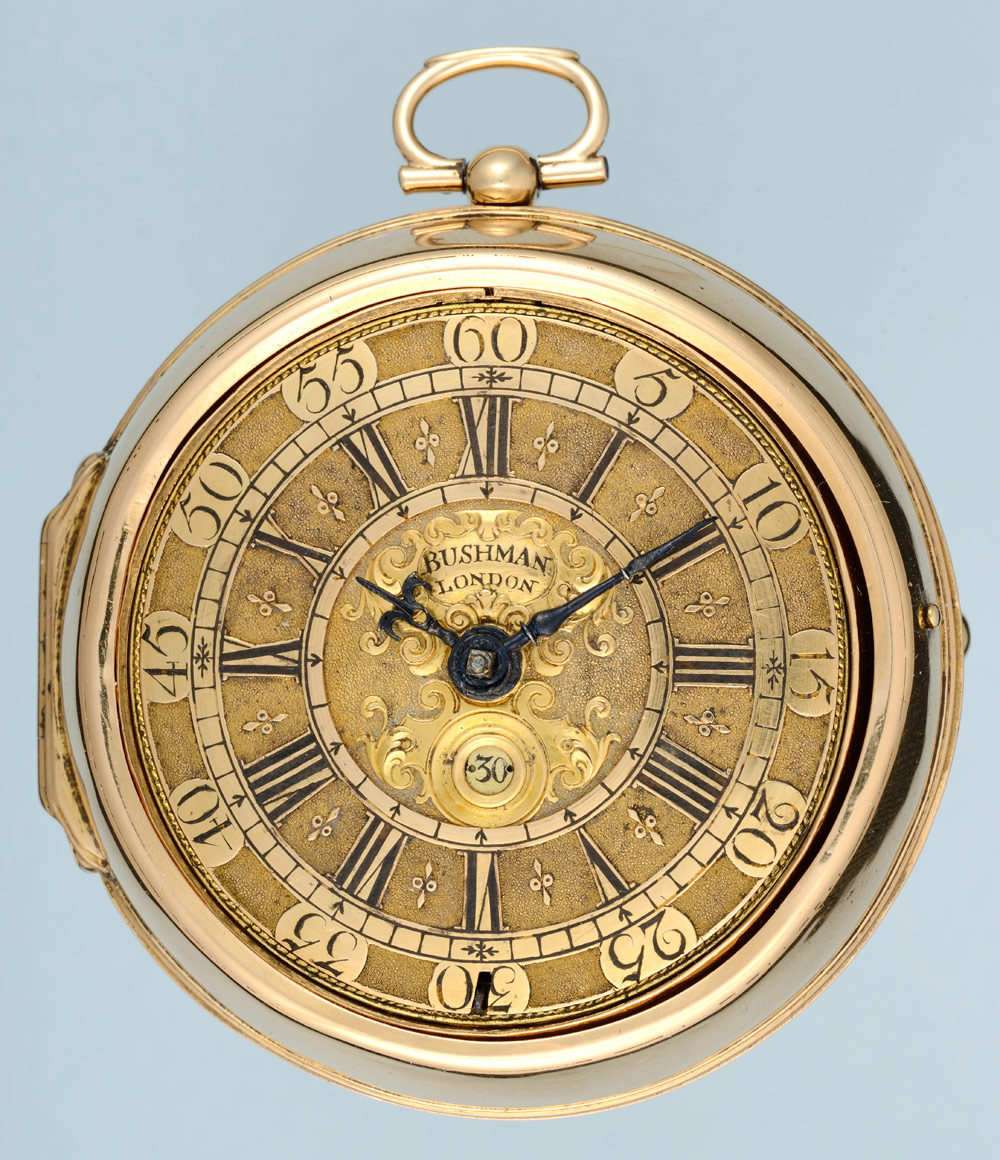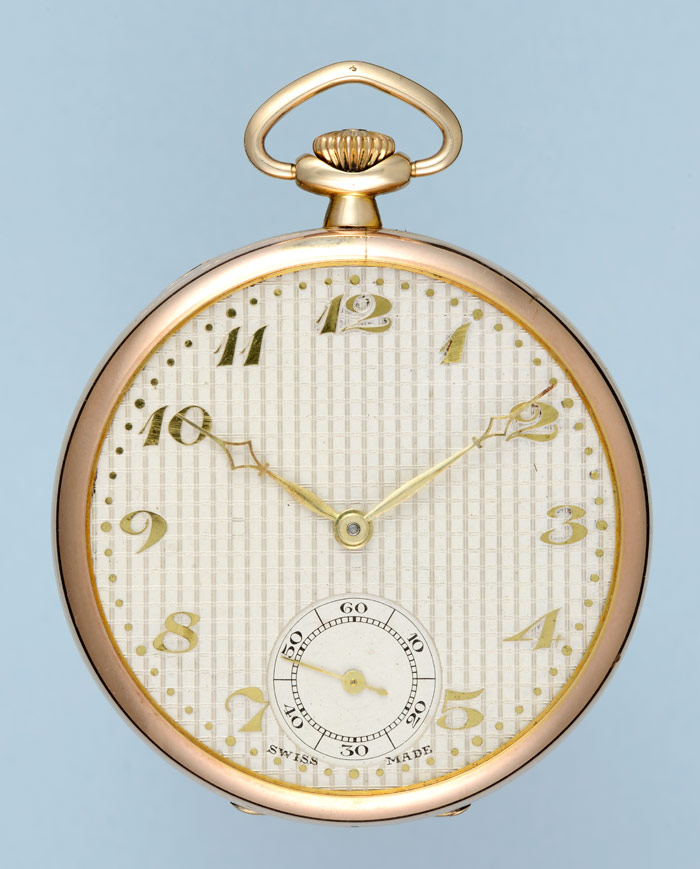A10048
Very Rare Double Wheel Debaufre
Original price was: £19,000.00.£17,000.00Current price is: £17,000.00.
Circa 1790
Out of stock
Description
A very rare late 18th Century French double wheel debaufre escapement with pirouette in a silver gilt open face case. Full plate gilt keywind fusee movement, polished steel Geneva stopwork. Harrison's maintaining power. Large engraved sector cock, polished steel regulator. Very large plain five arm steel balance beating seconds, blue steel spiral hairspring. The escapement and balance connect by a wheel and pinion pirouette. Very rare form of Debaufre escapement with two escape wheels, each with four teeth mounted on a pinion facing each other with the staff of the pirouette between them. These act alternately on a polished steel disc carried on the arbor of the mock pendulum. Signed white enamel dial with centre seconds, small chapter of Arabic numerals at twelve o'clock, blue steel seconds hand, gold hands. At the lower edge of the dial a glazed circular aperture revealing a mock pendulum moving in time with the balance. Engine turned silver gilt open face case hallmarked London 1828. Ribbed middle, reeded pendant and bow. In a gilt tooled red morocco case from Camerer Cuss & Co, 56 New Oxford Street. Their book was first published in 1967.








